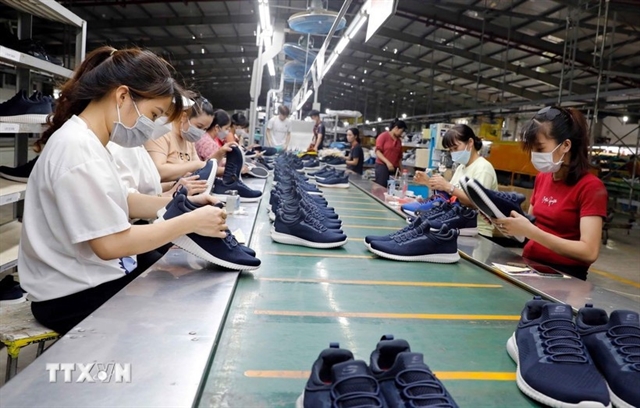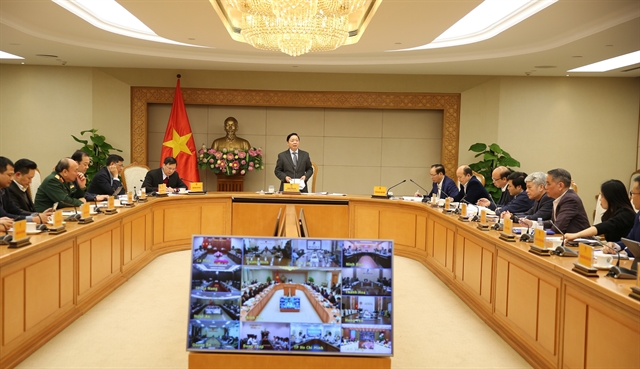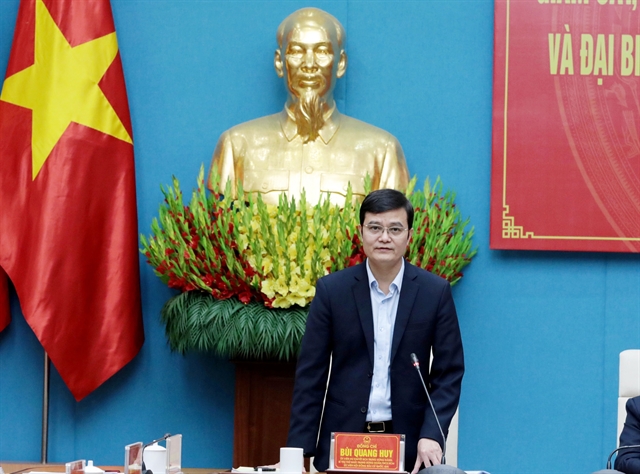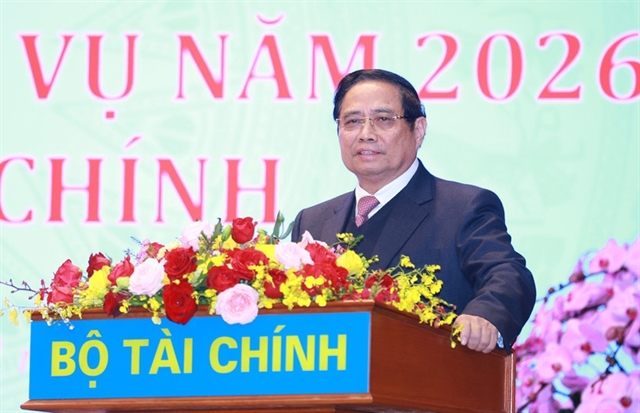 Economy
Economy

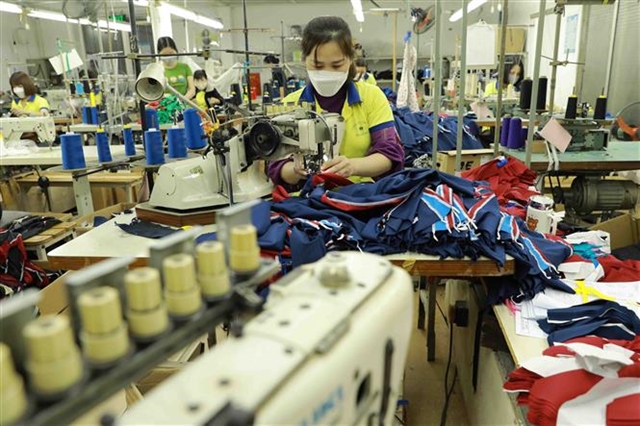 |
| A worker making products for export at a plant in Hà Nội. — VNA/VNS Photo |
HÀ NỘI — The country's textile, garment and footwear industries have long relied on imported raw materials, causing a current trend of foreign enterprises shifting industries to other countries, said insiders.
In response to concerns raised by deputy Phạm Văn Hòa of Đồng Tháp Province at the 15th National Assembly (NA)'s question-and-answer on June 4, Minister of Industry and Trade Nguyễn Hồng Diên said: "Việt Nam is no longer a haven for labour-intensive, land-intensive or low-productivity industries with cheap labour costs."
According to Minister Diên, over the past 10 years, textile, garment and footwear products have accounted for a significant portion of Việt Nam's export structure. The industry has contributed to the nation's growth in export value and helped create jobs and income for workers.
This was more prevalent in the initial phase, about 10 years ago, when it helped restructure the economy.
But the shifting of foreign enterprises in these industries to other countries is now considered normal, as Việt Nam no longer offers the advantages that initially attracted these low-productivity industries.
Going forward, Diên emphasised that all of the country's exporting manufacturers must aim for greater control over raw material supply. Relying on imports would limit profitability, as it is essentially just doing processing work.
To address this, the Ministry of Industry and Trade (MoIT) has recommended the Government implement comprehensive national, sectoral and local master plans. In the industry and trade sector, four national plans have been developed covering energy, electricity, petroleum and mineral resources.
The ministry emphasised that the four national master plans are crucial to providing raw materials for Việt Nam's manufacturing and exports.
These resource-based industries can not only meet the needs of export-oriented manufacturing, but also contribute significantly to local and national budget revenues.
The authority said that all exporting manufacturers, not just in the textiles and garment industry, must strive to utilise domestic raw material sources. By tapping local minerals, these industries can achieve self-sufficiency in raw materials.
This would allow them to move beyond low-cost processing and increase the value-add of their exports, Minister Diên stressed.
Recent customs data shows the textile and garment sector facing challenges, with exports declining 11.4 per cent year-on-year to US$33.3 billion in 2023, while textile fibre and yarn fell 7.6 per cent to $4.4 billion.
As a result, total textile and garment exports reached around $40 billion.
Meanwhile, Việt Nam's leather and footwear export value dropped 14.2 per cent to $24 billion. Footwear exports, which make up the majority of the industry, dipped 15.3 per cent to $20.2 billion, accounting for 5.7 per cent of the country's total exports.
Exports of related products like handbags, suitcases, hats and umbrellas also fell, down 7.8 per cent to $3.78 billion.
On the contrary, the industry still relies heavily on imported raw materials. The import value of raw materials for the textile, garment and leather-footwear sectors reaches tens of billions of dollars annually.
The localisation rate, or use of domestic raw materials, in these export-oriented industries is relatively low, currently estimated at 45-50 per cent, according to the MoIT.
A growing chip manufacturing hub
Southeast Asia and India stand to be net beneficiaries of companies diversifying manufacturing capabilities to complement existing bases in China, a recent report from Jones Lang Lasalle (JLL), a global commercial real estate and investment management company, showed.
Particularly, Việt Nam will grow significantly and be a hub with strengths extending beyond electronics manufacturing. Therefore, the investment wave is now turning to this industry.
The country's semiconductor industry is witnessing strong development, with numerous multi-million dollar foreign direct investment (FDI) projects coming to invest.
Leading chip makers like Intel, Samsung and Hana Micron have made significant investments in Việt Nam over the past few years.
Intel opened the world's largest chip assembly and testing facility in the country in 2021 as part of around $1.5 billion in total investment.
Samsung also revealed plans in 2022 to start producing semiconductor wafers in Việt Nam by late 2023, while South Korea's Hana Micron inaugurated a $600 million manufacturing project in the country in 2023, with plans to invest over $1 billion by 2025.
Amkor Technology, another South Korean semiconductor company, inaugurated a new $1.6 billion factory in Bắc Ninh Province. The facility specialises in the production, assembly and testing of semiconductor materials and equipment.
In early December 2023, a delegation from the US Semiconductor Industry Association (SIA), with top executives from leading US semiconductor companies such as Intel, Synopsys, Ampere Computing, Marvell and ARM, visited Việt Nam to explore investment opportunities and support connections between businesses in the two countries.
Statistic from the Ministry of Information and Communications showed that Việt Nam emerges as major semiconductor exporter to the US, accounting for over 10 per cent of total semiconductor chips imported into the market. It ranks third in terms of semiconductor chip export revenue to the US, trailing only Malaysia and Taiwan (China).
These investments by top global semiconductor firms highlight Việt Nam's growing status as an important hub for high-tech electronics manufacturing and its favourable conditions for attracting more FDI in the industry. — VNS


